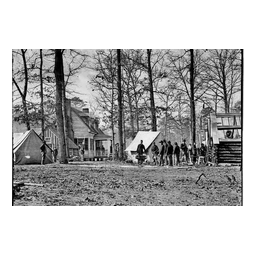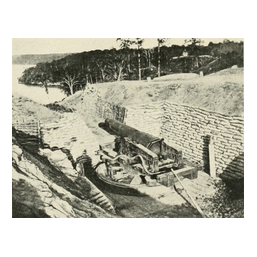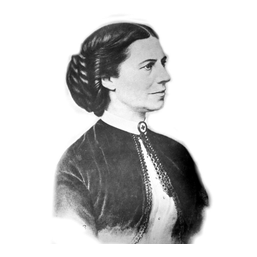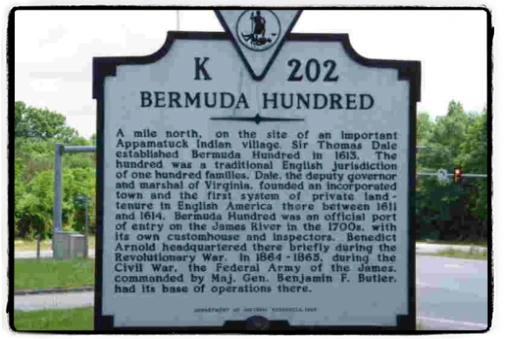Bermuda Hundred Campaign
Bermuda Hundred Campaign in Chesterfield County, VA
We have a rich history to tell and show our visitors. In 1861, Chesterfield County was assured a prominent role in the Civil War due to its geographic proximity to Richmond, the capital of the Confederacy. Its location, combined with various railroads and the James and Appomattox rivers, made it an obvious target for the Union army and navy. Action began in the spring of 1862, when a Union naval fleet, led by the famous ironclad U.S.S. Monitor, steamed up the James River. The only thing that stood in their way was an unfinished fort at Drewry's Bluff, just eight miles below Richmond. On May 15, Confederate guns in the fort fired on the Union ships. When the smoke cleared, the heavily damaged Union fleet was forced to retreat. Casualties were slight on both sides, and Chesterfield County had a two-year reprieve before seeing action again.
"On to Richmond" became the clarion call for the President Abraham Lincoln and the Union Army. It started in Chesterfield County, VA. The first major action of the Civil War in Chesterfield County took place on May 15, 1862 when a federal flotilla led by the Union ironclad USS Monitor headed toward Richmond on the James River. The Federals were turned back after a three hour battle with Confederate guns at Drewry’s Bluff. In the spring of 1864, the war again came directly to Chesterfield County when Union General Benjamin F. Butler landed the Army of the James on the Bermuda Hundred peninsula. Butler’s mission was to secure a base of operations and then advance on Richmond. During the first days of May, Butler made tentative advances forward, but then fell back to his defensive positions at Bermuda Hundred. The Battle of Drewry’s Bluff on May 16 halted Butler’s greatest attempt to move on toward Richmond.
Pictured below are some of the main characters of the Bermuda Hundred Campaign. Left to right is a drawing of the Battle of Trent's Reach, Butler's Headquarters at Point of Rocks, Battery Dantzler, General P.T. Beauregarde, U.S. Nurse Clara Barton, Battle of Chester Station drawing, Colonel Thomas Osborne, Colonel Walter Stevens, and Colone Frederick Wead.
Butler in Retreat
Bermuda Hundred Campaign
As Butler retreated back to his prepared positions in Bermuda Hundred, the Confederates followed and began to dig their own set of entrenchments. The Confederate fortifications and trenches became known as the Howlett Line, and prevented Butler from making any more direct threats to Richmond. Confederate and Union troops faced each other across those trenches for the rest of the war.
Visit here. Battle Animations








